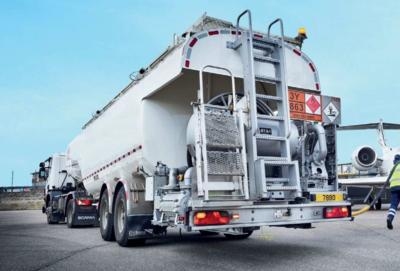Tue, Jan 31, 2023
Sustainable Fuel Production Insufficient to Meet Government Goals by 2030
The NASA administrator has affirmed the Biden admin's support for sustainable aviation fuel, announcing a partnership with Boeing to create a single-aisle, SAF-powered aircraft.

The Biden office has set a goal for the US to produce enough SAF to meet 100% of domestic jetA demand by 2050, when emissions from the industry are projected to make up a sizable proportion of the country's carbon emissions after decades of decarbonization in other sectors. Congress aimed to bolster SAF production in its 2022 package with a tax credit of $1.25 per gallon for jet fuel blended with a percentage of SAF, a step in the direction that will likely evolve over time to omit virgin petroleum as a feedstock altogether. The legislation also included $68 million in the fiscal 2023 government spending law to support carbon reduction efforts in the aviation industry, like provisions directing federal agencies to prioritize SAF research and development.
The boom in SAF production has continued to be outpaced now that legislators have begun to pay more attention to it, however. While companies from around the world have ramped up output of sustainable jet fuel, overall production remains somewhat niche and limited in availability, with an average of only 4.5 million gallons produced per year (2021). In order to meet White House goals, that number needs to climb to at least 3 billion gallons over the next 7 years. Take up also needs to improve, as Congress has attempted to solve with its foray into subsidies. Currently, awareness and availability are still low throughout the aviation industry, giving time for manufacturers to test their engines and aircraft on blended SAF and approve the combinations before widespread rollout.
SAF tends to sit at a pretty steep price point compared to standard jetA, like today's average of $9.30/gal SAF to $6.96 jetA in California. Sustainability and eco-friendliness are nice, but most Cost-conscious operators won't spring for an extra $2.34 a gallon for the warm fuzzies alone. Only economies of scale can bring that price down to reach, barring some full-on legal strong arming to strangle kerosene fuels out of the market, however unlikely.
“The lack of sufficient supply [of SAF] is the biggest issue right now,” said Geoff Cooper, president of the Renewable Fuels Association. “There’s some stuff being produced, but it’s a very small volume, and until we get more production facilities up and running, the cost is going to be high.”
More News
According To The Witness, Once The Airplane Landed, It Continued To Roll In A Relatively Straight Line Until It Impacted A Tree In His Front Yard On November 4, 2025, about 12:45 e>[...]
"In the frame-by-frame photos from the surveillance video, the left engine can be seen rotating upward from the wing, and as it detaches from the wing, a fire ignites that engulfs >[...]
Radar Required A term displayed on charts and approach plates and included in FDC NOTAMs to alert pilots that segments of either an instrument approach procedure or a route are not>[...]
From 2023 (YouTube Edition): It’s a Small World After All… Founded in 2011 by pilot, aircraft designer and builder, and U.S. Air Force veteran Sam Watrous, Uncasville,>[...]
Also: UFC Buys Tecnams, Emirates B777-9 Buy, Allegiant Pickets, F-22 And MQ-20 The NTSB's preliminary report on the UPS Flight 2976 crash has focused on the left engine pylon's sep>[...]
 NTSB Prelim: Funk B85C
NTSB Prelim: Funk B85C Aero-News: Quote of the Day (11.21.25)
Aero-News: Quote of the Day (11.21.25) ANN's Daily Aero-Term (11.21.25): Radar Required
ANN's Daily Aero-Term (11.21.25): Radar Required Classic Aero-TV: ScaleBirds Seeks P-36 Replica Beta Builders
Classic Aero-TV: ScaleBirds Seeks P-36 Replica Beta Builders Airborne 11.21.25: NTSB on UPS Accident, Shutdown Protections, Enstrom Update
Airborne 11.21.25: NTSB on UPS Accident, Shutdown Protections, Enstrom Update



